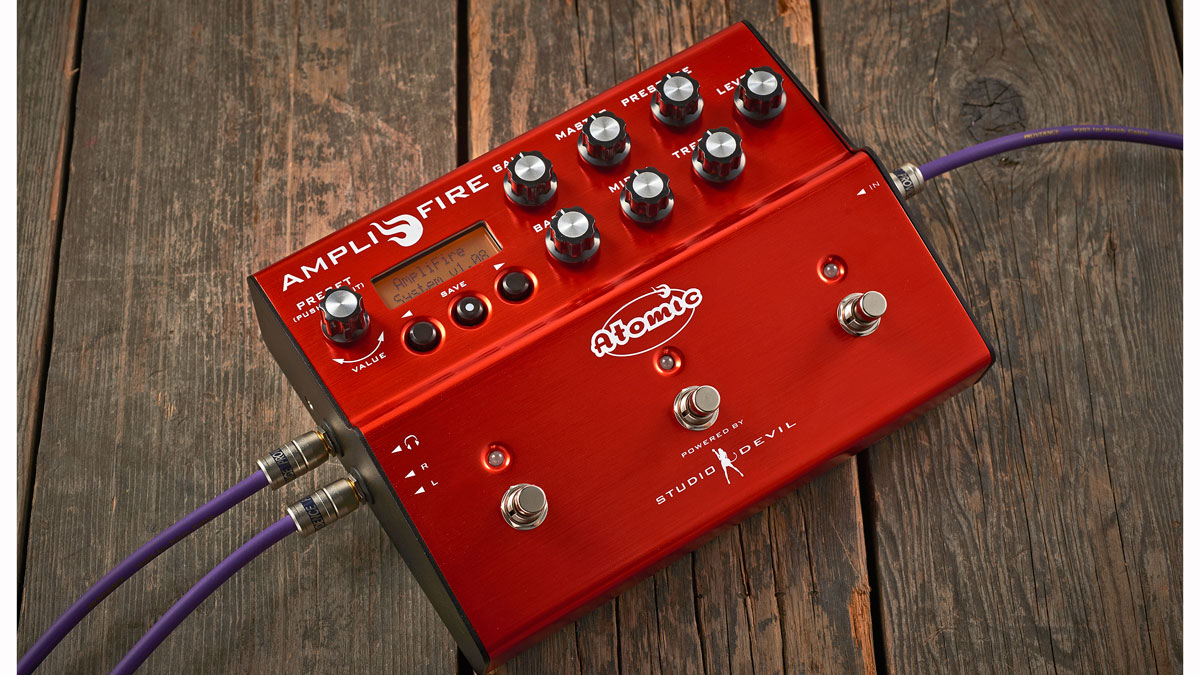MusicRadar Verdict
The AmpliFire lends itself to headphone-connected practice and might provide instant rock-in-a-box sounds for recording, too, as well as possible scope for live work.
Pros
- +
Robust.
Cons
- -
Basic interface. Lacking on modelled gear.
MusicRadar's got your back
Rather than using a conventional amp at a gig, there are a number of more compact and portable digital-modelling options loaded with amp and effects sounds that can be connected directly up to a sound system or to your own speaker cabinet.
Atomic is a company that knows all about that, as its best-known product is the CLR Reference Monitor, a full-range powered monitor that's often seen partnered with the high-end modellers such as a Kemper Profiler, Fractal Audio Systems Axe-Fx II or Line 6 Helix.
It may seem a natural step, then, for Atomic to come up with its own amp-and-effects modeller to take on the likes of Kemper, Fractal and Line 6 at their own game, and the company has done it with the AmpliFire, a relatively compact stompbox unit with a pretty straightforward user interface.
While the AmpliFire is a fraction of the price of some of its high-end competitors, it features the same sort of under-the-hood clout through two SHARC DSP processors and Cirrus Logic converters.
The unit's sounds are provided by Studio Devil, long-time producers of computer-based amp simulation software, who have created the amps, effects and speaker simulations. AmpliFire also has the ability to load third-party cabinet impulse responses for realistic sound.
AmpliFire is robust, featuring a mono input, and a variety of outputs to send simultaneous signals to a PA/mixing desk and your amp/powered monitor. There's also a headphone socket, an effects loop for connecting other pedals into the system and an aux input to bring in backing tracks for practice.
Three footswitches can be programmed for tasks such as changing presets, bringing effects in and out or changing a preset's parameters.
For quick tonal tweaks, you get a set of amp-like knobs: Gain, Master, Presence, Bass, Mids and Treble, plus an overall output level control. MIDI allows preset switching via program changes and enabling individual effects via continuous controllers.
In Use
Editing the 128 presets is easily carried out from the front panel, but the free software editor makes everything faster and easier. There's not a massive amount of different modelled gear here, just a few well-selected amps - including familiar classics and newer stuff such as a Cornford. More will be added via regular firmware upgrades.
Factor in effects that cover all the popular genres and a signal chain with pre- and post- elements including parametric and graphic EQ options, plus any uploaded IRs, and there's a lot of scope to create a variety of sounds via tweaking the appropriate on-board parameters to your liking.
Trevor Curwen has played guitar for several decades – he's also mimed it on the UK's Top of the Pops. Much of his working life, though, has been spent behind the mixing desk, during which time he has built up a solid collection of the guitars, amps and pedals needed to cover just about any studio session. He writes pedal reviews for Guitarist and has contributed to Total Guitar, MusicRadar and Future Music among others.
"I said, “What’s that?” and they said, “It’s what Quincy Jones and Bruce Swedien use on all the Michael Jackson records": Steve Levine reminisces on 50 years in the industry and where it’s heading next
“Excels at unique modulated timbres, atonal drones and microtonal sequences that reinvent themselves each time you dare to touch the synth”: Soma Laboratories Lyra-4 review
“I used everything I knew about music”: How Green Day exceeded expectations with their most ambitious song











